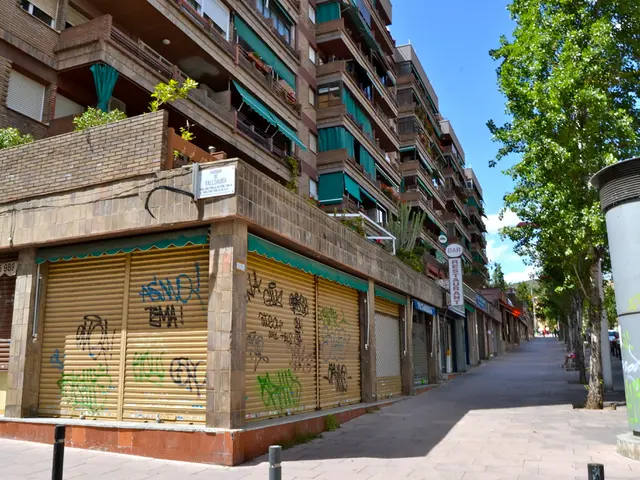capital of Cambodia's Charms Unfold
Skyline of Phnom Penh, Cambodia: A Panoramic View
Phnom Penh, named after the hill in its heart, serves as the dazzling capital of Cambodia, where vibrant modern life intertwines with historical traditions. Sitting gracefully along the confluence of the Mekong and Tonle Sap rivers, the metropolis pulsates with vitality and charm.
Phom Penh skyline showcases a mesmerizing blend of traditional and contemporary architecture.
This vibrant city offers a captivating panorama, with the majestic Royal Palace standing alongside contemporary structures. It's a testament to the city's resilience and adaptability, continually balancing its rich heritage with its evolving identity.
The Majestic Royal Palace
The Royal Palace, crafted in 1866, is a beacon of the city's grandeur. It's the official residence of the King of Cambodia, intricately portraying the nation's cultural depth and history. Adjoined to the palace lies the prestigious Silver Pagoda, known for its floor layered with silvers tiles and preserved spiritual artifacts.
The National Museum: A Window to the Past
Serving as the depository of Khmer art and historical documents, the National Museum provides a captivating glimpse into the country's exciting past.
A Spiritual Heart: Temples and Religious Institutions
Religion intertwines deeply with the Cambodian culture, making Phnom Penh home to numerous temples and spiritual institutions like the Buddhist University. This emphasizes the city's spiritual roots.
New Khmer Architecture: Embracing the Modern
The dynamism of Phnom Penh's architecture harks back to the historical and embraces the modern through designs that seamlessly join traditional Khmer elements with contemporary influences. The Vann Molyvann House, a breathtaking architectural marvel crafted by Vann Molyvann in 1966, is an iconic example of this blend.
The City Ascending: Urbanization and Challenges
Rapid urbanization continues to reshape Phnom Penh's landscape with the rise of contemporary buildings, malls, and commercial hubs. Although it underlines the city's growing economic prowess, it also poses challenges to preserving architectural gems like the Vann Molyvann House, hidden amidst the city's new developments.
In essence, Phnom Penh's eclectic cultural and architectural scene reflects the nation's rich history, adaptability, and deep-rooted traditions. Its unique blend of the ancient and modern beguiles visitors, promising an enthralling journey through time.
By 2025, the vibrant lifestyle in Phnom Penh, the capital city of Cambodia, promises to captivate travelers with its enticing blend of history, modernity, and spirituality. Scheduled visits might include the grand Royal Palace, dating back to 1866, the illustrious Silver Pagoda, and the National Museum, a treasure trove of Khmer art and historical documents. This contrasting yet harmonious mixture of cultural landmarks, exotic temples, and New Khmer Architecture symbolizes the city's resilience, evolution, and enduring traditions. Thus, a trip to Phnom Penh ensues not just as a travel experience, but as a journey through the confluence of time, heritage, and vitality, offering a compelling glimpse into Cambodia's heart.






